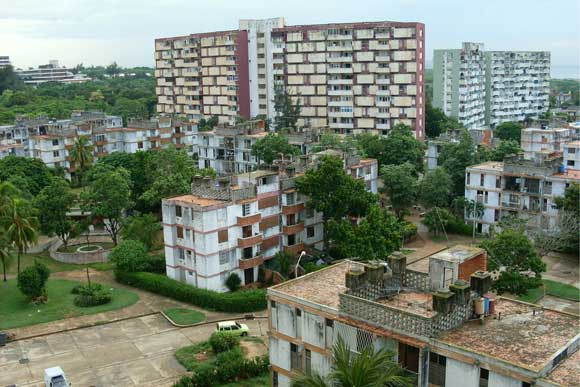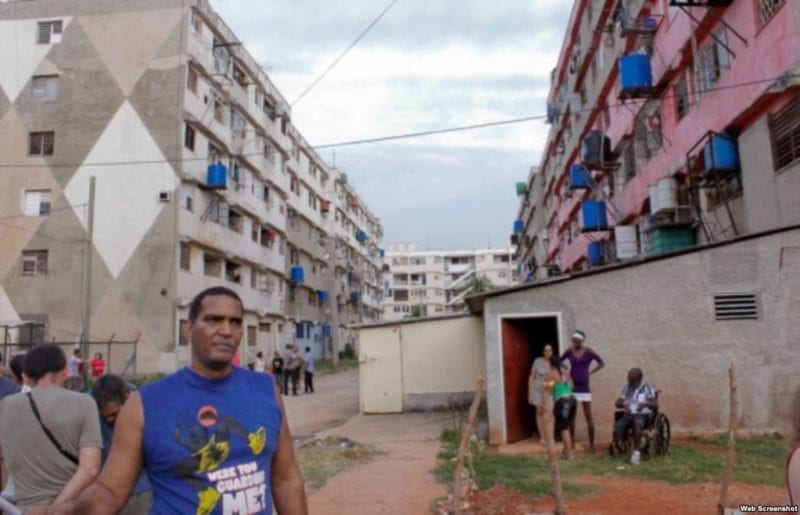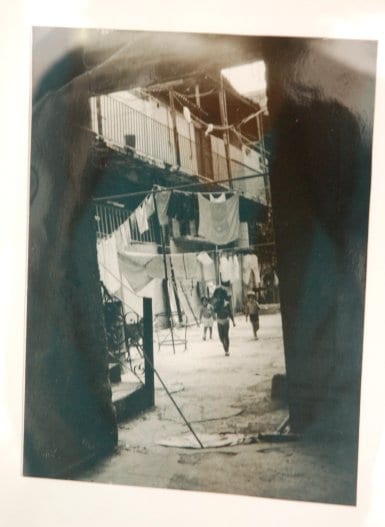Cuba’s Pressing Housing Deficit Situation
By Pilar Montes

HAVANA TIMES – Cuba’s eight month old administration under President Miguel Diaz Canel has described reducing the country’s housing deficit a most pressing matter, as well as increasing food production.
When the Revolution triumphed on January 1, sixty years ago, Cuban society was widely stratified with a large part of the population living in conditions of shocking inequality, from poor neighborhoods to luxury hotels and high-rise buildings that decorate Havana’s beachfront.
Back then, the national housing deficit stood at one million homes. Today, the figure remains much the same: 920,000, with the reality of nearly 6 million more inhabitants than before.
Official data estimates that 40% of today’s homes are in regular or poor condition, needing to be rebuilt or made brand-new.
The ideal of a new home, both now and then, is a home that reflects a more just society in a poor country, in its form and technology. However, this hasn’t been achieved after six long decades, for reasons as wide-ranging as copying bad foreign influences and the insufficient use of locally designed solutions.
According to architect Dania Gonzalez Couret, from the Architecture Department at the Jose Antonio Echeverria Technological University of Havana, in her study “Half a Century of Low-Cost Housing Projects in Cuba”, published in 2009, “many precarious settlements were eradicated and new homes were given to their inhabitants in communities or neighborhoods specially designed and completed with services, infrastructure and public spaces.”

However, such essential housing development elements weren’t taken into account in later projects, as president Miguel Diaz-Canel pointed out in Parliament when talking about this issue.
The most important project from that time was the “Camilo Cienfuegos Neighborhood Unit” in East Havana, which followed the standards of modern urban design, with green spaces and the Pedro Sotto Alba naval hospital.
The huge Alamar residential area came later, which didn’t share the same quality or building concept as the Camilo Cienfuegos project.
Cuban low-cost housing in the 1960s was of a great quality, on the whole. Multi-family apartment blocks of up to three or four stories followed modern architectural codes, but taking the hot/humid climate into account, and the interior space solutions were as flexible as the traditional load-bearing walls allowed for, Gonzalez pointed out.
In spite of having made a difference to the lives of thousands of families at that time, and in spite of the monotonous style of apartment blocks, many people who benefitted from the program believe the volunteer “micro-brigade” housing construction is an experience that should be repeated,
The “micro-brigade” housing construction movement
According to the book Architecture and urbanism in the Cuban Revolution (1989), by Roberto Segre, “there was a significant decline in the number of homes built by the State between 1965 and 1970; from over 10,000 in 1967, falling to 4,000 in 1970.”

In December that year, the Micro-brigades were formed as a response to the housing crisis, first and foremost. Reestablishing lost confidence could have been a desirable secondary effect.
Controlled by Havana’s Directorate of Housing at the Ministry of Construction (MICONS), the new urban project was conceived for 130,000 inhabitants.
The micro-brigades were made up of people who left their regular jobs, often for several years, so as to build homes for themselves and their colleagues, who stayed behind and covered their duties at work so production wouldn’t be affected.
Once the homes were built, 20% of them were handed over to the State and the rest were allocated at worker assemblies, where accomplishments and needs were considered.
There were 33 laborers in each brigade, just the right number of people needed to build a five-story building with thirty two or three bedroom apartments in each one. One part of the team would normally work on social projects: schools, day care center, the sewage system. They worked from 8 AM until 6 PM, Monday to Saturday, as well as on Sunday mornings.
Under Havana’s Directorate of Housing at the Ministry of Construction (MICONS), the new urban project was conceived for 130,000 inhabitants. Humberto Ramirez was 28 years old and was a teacher at the Architecture School when he became the project manager.

Areas 1 and 2 had already been completed in Alamar, Areas 3 and 4 were under construction, Area 5 was underway, and Area 6 was already coming along. According to Segre, there were 444 brigades at that time, which would mean there were 12,715 laborers.
When they were created back in 1970, this movement served to bring the Cuban people closer together, after they were unable to meet the epic target set with the 10-million ton sugar harvest.
Even though President Diaz-Canel didn’t call them by the same name, he did say that every State body would have to build homes with their own resources, as well as people building using their own means and efforts, if this important project is to get off the ground. [Where such funding in these lean times will come from is unclear.]
He explained that all of this effort is so that redtape is made easier for the Cuban people, but not taking away the State’s strict control in order to prevent resources from being diverted, corruption and bureaucracy’s predominance.
The Head of State said, “The people are hoping for an economic response that influences their everyday life, which is why most of all our time needs to be spent fighting this battle,” giving his words a sense of urgency and leaving behind former president Raul Castro’s motto of “without haste, but without pausing.”
CUBA’S HOUSING SITUATION (2018)
3,824,861 total number of homes today of which 2,568,267 homes were built since 1959.
88% belong to their occupants
Of the remaining 12%: State bodies possess 34%, 20% are leased out, 22% permanently rented out and 24% without ownership titles.

Current housing in a precarious condition
84,452 homes in 9,823 tenements
117,775 dirt floors
854 multi-family apartment buildings in a critical state
696 buildings in a critical state in Havana
209,861 homes damaged by meteorological events
60,975 totally collapsed
Estimated time to meet demand: 10 years
Source: Granma Newspaper (19/12/2018), from the National Assembly of the People’s Power sessions (parliament) – 17-22 December 2018






Good Morning,
Interesting. Perhaps our new web site ‘Global Affordable Housing’ can be of help for you in the future.
Thanks,
James